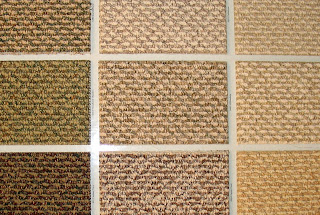The art of weaving developed in the region comprising Pakistan at a time when few other civilizations employed it. Excavations at– ancient cities of the Indus Valley civilization – have established that the inhabitants used spindles and spun a wide variety of weaving materials. Some historians consider that the Indus Valley civilization first developed the use of woven textiles.
Carpet weaving may have been introduced into the area of present-day Pakistan as far back as the eleventh century with thbeginning of the Mughal Dynasty in the early sixteenth century, when the last successor of Timur, Babar, extended his rule from Kabul to India to found the Mughal Empire. Under the patronage of theadopted Persian techniques and designs. Carpets woven in the Punjab at that time (often called Lahore carpets today) made use of motifs and decorative styles found in Mughal architecture.Empire. Under the patronage of the Mughals, Indian craftsmen adopted Persian techniques and designs. Carpets woven in the Punjab at that time (often called Lahore carpets today) made use of motifs and decorative styles found in Mughal architecture.
During the Mughal period, the carpets made on the Indian subcontinent became so famous that demand for them spread abroad. These carpets had distinctive designs and boasted a high density of knots. Carpets made for the Mughal emperors, including Jahangir and Shah Jahan, were of the finest quality. Under Shah Jahan's reign, Mughal carpet weak on a newnd entered its classical phase.
At present, hand-knotted carpets are among Pakistan's leading export producanufacture is the second largest cottage and small industry. Pai craftsmen have the capacity to produce any type of carpet using all the popular motifs of gulls, medallions, paisleys, traceries, and geometric designs in various combinations.After the partition of British India, Muslims migrated in the Area called Pakistan and started manufacturing of carpet in , a small Tond immigrants. Sangla Hill is now a focal point in Carpet Industry in Pakistan. Almost all the exporters and manufacturers who are running their business at Lahore, Faisalabad and Karachi have their area offices in Sangla Hil
Carpet weaving may have been introduced into the area of present-day Pakistan as far back as the eleventh century with thbeginning of the Mughal Dynasty in the early sixteenth century, when the last successor of Timur, Babar, extended his rule from Kabul to India to found the Mughal Empire. Under the patronage of theadopted Persian techniques and designs. Carpets woven in the Punjab at that time (often called Lahore carpets today) made use of motifs and decorative styles found in Mughal architecture.Empire. Under the patronage of the Mughals, Indian craftsmen adopted Persian techniques and designs. Carpets woven in the Punjab at that time (often called Lahore carpets today) made use of motifs and decorative styles found in Mughal architecture.
During the Mughal period, the carpets made on the Indian subcontinent became so famous that demand for them spread abroad. These carpets had distinctive designs and boasted a high density of knots. Carpets made for the Mughal emperors, including Jahangir and Shah Jahan, were of the finest quality. Under Shah Jahan's reign, Mughal carpet weak on a newnd entered its classical phase.
At present, hand-knotted carpets are among Pakistan's leading export producanufacture is the second largest cottage and small industry. Pai craftsmen have the capacity to produce any type of carpet using all the popular motifs of gulls, medallions, paisleys, traceries, and geometric designs in various combinations.After the partition of British India, Muslims migrated in the Area called Pakistan and started manufacturing of carpet in , a small Tond immigrants. Sangla Hill is now a focal point in Carpet Industry in Pakistan. Almost all the exporters and manufacturers who are running their business at Lahore, Faisalabad and Karachi have their area offices in Sangla Hil




























